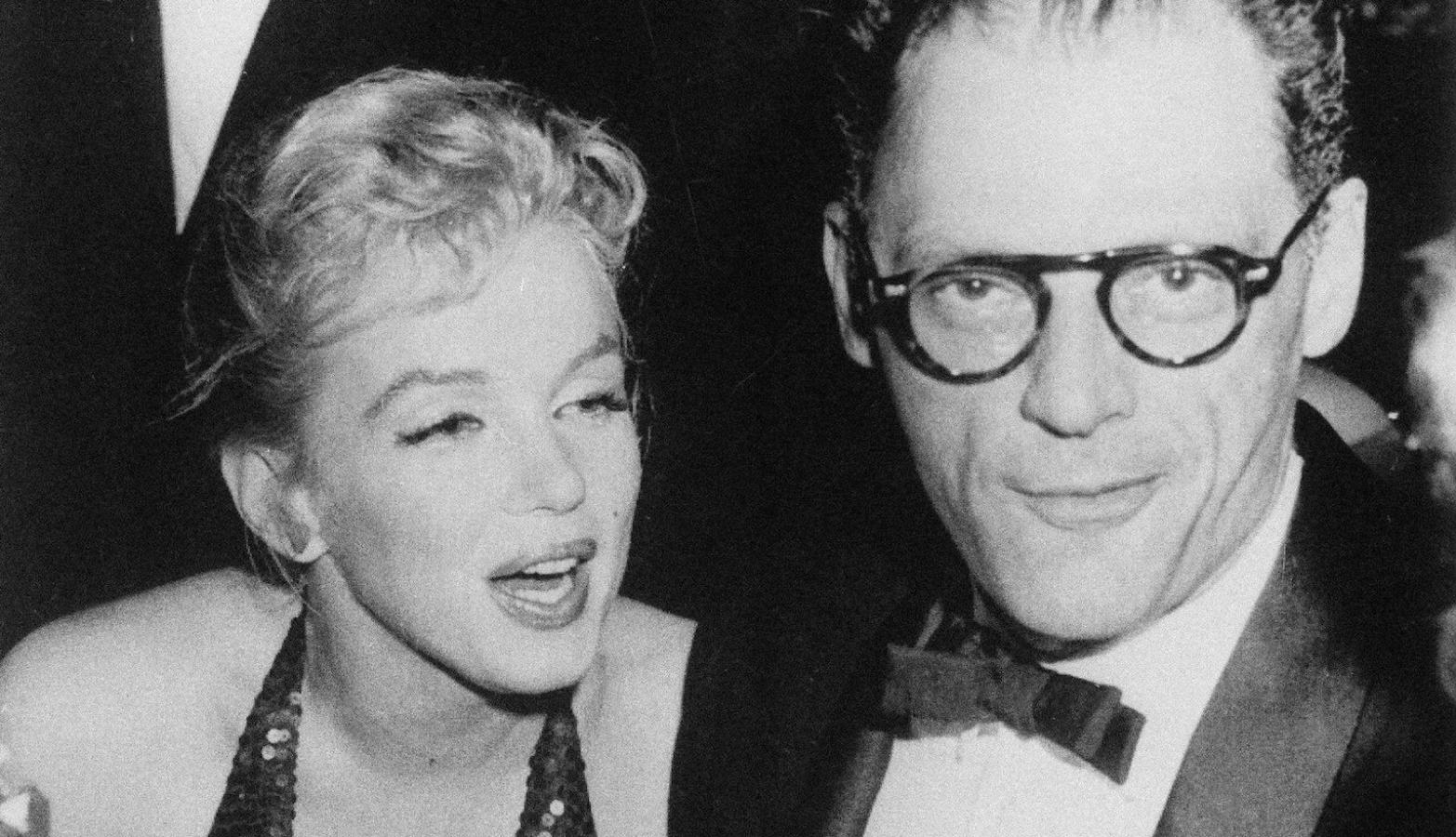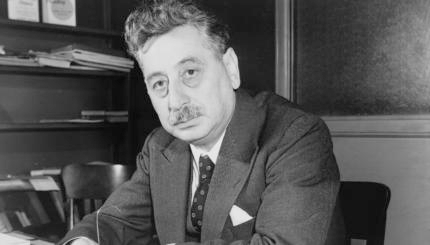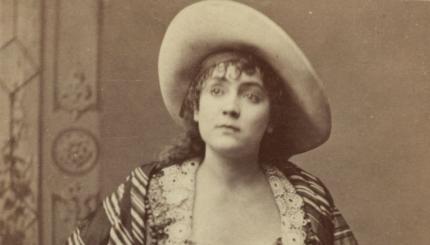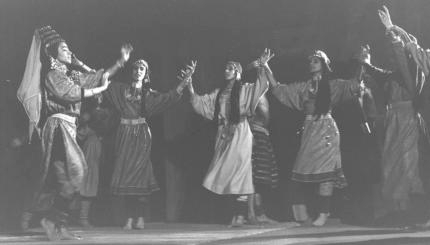When the Yiddish translation of Arthur Miller’s Death of a Salesman was first performed in 1951, several years after its (English) Broadway debut, some prominent critics remarked that the play seemed more “authentic” in Yiddish. They felt that only the Yiddish dialogue was successful in peeling away protagonist Willy Loman’s all-American Everyman façade, revealing his true interior pintele yid (“little Jew”).
Willy Loman was not the only crypto-Jewish character on the American stage in the mid-20th century. Indeed, throughout the century, American Jewish playwrights refined or disguised certain ethnic elements of their Jewish characters, in order to appeal to a broader audience. But if the last decades of the 20th century and the beginning of the 21st are any indication, it seems that more self-confidently Jewish images will continue to be staged in years to come.
Fumbling Toward Self-Definition
The earliest popular Broadway play featuring Jewish characters was Abie’s Irish Rose, written by the non-Jewish playwright Anne Nichols. It opened in 1922 and was the longest-running show of its time, with over 2300 performances. In the play, protagonist Abe Levy marries his gentile sweetheart, Rose Murphy–much to the initial dismay of his Jewish mother and father.
Rather than affirming Jewish identity, this play conveyed the message that Jews could “fit in” with the American landscape. At the end, the two warring fathers of the young couple are reconciled when they discover that the newly born twins of Rose and Abe–a boy and a girl–are given respectively the names of their Irish and Jewish grandparents.
More complex Jewish characters emerge in Elmer Rice’s Street Scene (1929). In this play, Abe Kaplan, an old political radical, criticizes American capitalism, goading the bigoted villain Willie to accuse him of holding “un-American” ideals. Meanwhile, Abe’s bookish son, Sam, falls in love with an Irish girl–who happens to be Willie’s daughter. But in this play, the young couple does not stay together. Rice’s play, unlike Abie’s Irish Rose, suggests that even in America there are important differences between ethnic groups–cultural as well as religious–that are not easily bridged even by love.
Although there are no overtly Jewish religious elements in Street Scene, Rice’s characters reflect familiar Jewish cultural types of the era. Sam is devoted to his studies, and Abe–who is identified in the cast description as a “Russian Jew”–speaks with a Yiddish accent and openly avows his ethnic background. His passionate advocacy for social justice might have also been interpreted by contemporary audiences as a “Jewish” trait.
Another portrait of the Jewish immigrant generation can be seen in Clifford Odets’ family drama, Awake and Sing (1934). Ridiculed by his businessman son and scheming daughter, the old revolutionary Jewish immigrant, Jacob, finds common ground with his grandson Ralph. At the end of the play, Jacob commits suicide but bequeaths his life insurance policy to Ralph, so the young man can break away from his materialistic family. The grandfather’s gift of money to liberate his grandson to create a new world “not printed on dollar bills” is perhaps one of the unintended ironies of the piece.
Odets’ criticism of American materialism and, specifically, the crassness of capitalist society is reflected in Jacob’s son, Morty, who flaunts his money and mocks his father’s idealism. This portrait garnered criticism from some Jews, who felt Odets was perpetuating Jewish money-grubbing stereotypes. But other Jewish critics admired Odets for not fearing that his honest depiction of Morty, and his scheming wife Bessie, would be a shande far di goyim (a disgrace in front of the Gentiles).
Judaism on Stage
The mid-century plays of Paddy Chayefsky, a prominent dramatist, novelist, and Academy Award winning screenwriter, have more explicitly Jewish religious content. In The Tenth Man (1959), Chayefsky offers a modern version of the classic Yiddish dybbuk exorcism drama. In Gideon (1961), Chayefsky retells the biblical tale of a man resisting the will of God, as told in Judges, chapters 6-8.
Arthur Miller’s later works, such as Incident at Vichy (1964) and After the Fall (1965), both of which deal with the Holocaust, and The Creation of the World and Other Business (1973), about Adam and Eve, also seem to reflect this Judaizing trend.
Some contemporary Jewish playwrights were among the first to prominently and urgently portray gay issues. Harvey Fierstein in Torch Song Trilogy (1982) touchingly portrays the romantic life of a drag queen, featuring a blistering encounter with his traditional Jewish mother. Larry Kramer in The Normal Heart (1985) presents an early and impassioned cri du coeur about the HIV–AIDS crisis in the early 1980s, through the eyes of a gay Jewish activist. Like Fierstein and Kramer, Tony Kushner in Angels in America (1992) introduces Jewish gay characters and themes in his work.
With a more confident sense of Jewish identity than their predecessors, these three of the best known contemporary Jewish playwrights boldly reject conventional views of the American Jew as needing to “fit in,” and instead celebrate their own sexual liberation as Jews, unafraid of displaying who they are.
1950s to Today
Possibly the most influential theatrical portrait of Jews is The Diary of Anne Frank (1955). It has been performed before more audiences than any other Jewish play, with perhaps the exception of Fiddler on the Roof. But as a depiction of a Jewish family in a life-and-death situation, the adaptation by non-Jewish playwrights Frances Goodrich and Albert Hackett projects a generalized portrait of Jews, with many of the diary’s most significant Jewish themes deleted.
For example, the play’s famous quote “Despite everything I believe that people are really good at heart,” was universalized so that it no longer specifically addressed Jewish suffering, as it did in the original diary. The new 1997 Broadway adaptation of The Diary of Anne Frank by Wendy Kesselman, however, tries to rectify Goodrich and Hacketts’ de-Judaizing of Anne.
In Kesselman’s adaptation, the Franks are now markedly Jewish, wearing the Nazi-enforced yellow stars as they go into hiding. The play also includes an extended Hanukkah scene, as well as a passionate promise from Anne to never turn her back on her people. This recent attempt to directly address Jewish issues reflects the trend of playwrights creating increasingly Jewish characters on American stages.
With your help, My Jewish Learning can provide endless opportunities for learning, connection and discovery.
Hanukkah
Pronounced: KHAH-nuh-kah, also ha-new-KAH, an eight-day festival commemorating the Maccabees' victory over the Greeks and subsequent rededication of the temple. Falls in the Hebrew month of Kislev, which usually corresponds with December.



